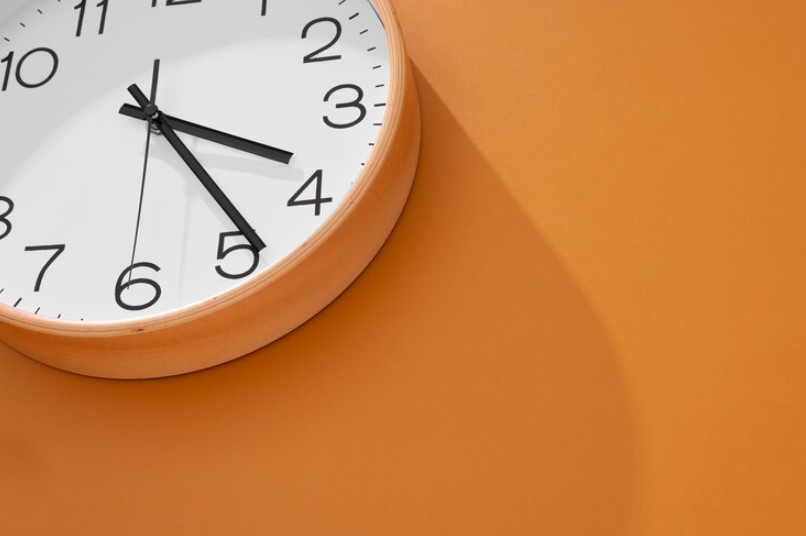Even with all the new digital tools we see today, interior designers still use analog clocks when decorating rooms. An analog clock doesn’t just tell the time—it adds charm and structure to a space. Many rooms come alive with a well-placed clock on the wall. Whether hanging above a fireplace or on a shelf, the analog clock shapes the room’s feel and direction. Designers rely on it because it blends style with function so naturally.
The analog clock for interior design keeps showing up again and again. People don’t just use it to check the time; they also admire its shape, colour, and how it fits everything else in the room. Its smooth hands and soft ticking carry something that digital clocks often miss. In this article, you’ll discover why interior designers stick with this timepiece and how it adds life to every corner of a room.
Aesthetic Harmony Over Utility
Analog Clocks Offer Timeless Visual Appeal
Analog clocks give more than an hour. They create a visual rhythm in a room. Their faces show time in a gentle way that also adds movement. Interior designers turn to analog clocks to brighten a blank space or give a room focus.
- Design Symmetry: Designers often place analog clocks to balance other objects in the room. The clock’s round shape softens sharp lines, creating a smooth flow across the space.
- Visual Balance: Analog clocks help rooms feel complete. Designers often place them in the centre of photo frames or above furniture to connect all wall parts.
- Material Diversity: Many clocks use wood, metal, or glass materials. This variety helps the clock fit in easily with other pieces in the room, making the design look thoughtful and complete.
You feel how well it fits when you step into a room with an analog clock. It doesn’t just sit there—it works with the room and helps guide the eyes.
Design Versatility in Different Styles
Analog Clocks Fit Seamlessly into Multiple Interior Themes
Analog clocks never get stuck in one style. Whether the room looks modern or classic, this clock always finds a way to match. Interior designers enjoy the freedom of using these clocks in any setup.
- Traditional Integration: Designers place analog clocks in cosy, older-looking rooms to match vintage furniture. The design and colours of the clock often look like they’ve always belonged there.
- Modern Compatibility: Clean and simple spaces still welcome analog clocks. Designers choose clocks with flat shapes and plain faces that fit into quiet, neat rooms.
- Eclectic Support: In rooms with many types of furniture, analog clocks help tie everything together. They act like quiet helpers, keeping the space connected and smooth.
Analog clocks allow designers to create different looks without changing the tone of the space. They become part of the story the room tells.
Analog Displays Promote a Calmer Atmosphere
Simplicity in Display Reduces Mental Distraction
Designers want rooms to feel peaceful and easy to enjoy. Digital clocks often flash or shine too brightly, which can bother the eyes. Analog clocks stay calm and quiet, helping a room feel more relaxed.
- Non-Distracting Interface: The soft movement of analog clock hands doesn’t grab attention. Instead, it lets you glance at the time you need it and then return to what you were doing.
- Mindful Time Perception: Watching the hands move slowly helps you feel time passing naturally. This slows things down, making the room feel restful and steady.
- Reduced Light Pollution: Analog clocks don’t glow or flicker like digital ones.
They keep the light soft and help people sleep or rest better in bedrooms and reading areas.
Designers place analog clocks where they want people to slow down, relax, or think clearly. The quiet presence of the clock helps keep the room’s energy grounded.
Decorative Flexibility Enhances Spatial Planning
Analog Clocks Function as Anchors in Spatial Layouts
Analog clocks do more than sit on a wall. Designers use them to shape how the room feels and how the eyes move across it. A room finds its centre with the correct clock in the right place.
- Wall Focal Points: A large analog clock draws the eyes first. Designers hang them on feature walls to guide attention and create a point of interest.
- Zoning Aid: In big rooms, analog clocks help divide spaces without putting up walls. Designers use them to mark areas like work zones or quiet corners.
- Vertical Emphasis: Designers hang clocks high in tall spaces to stretch the room upwards. This makes ceilings seem taller and adds drama without extra furniture.
With a smart placement, an analog clock can shift how a space feels and how people move through it. Designers use this power to guide the flow of a room.
Customisation Possibilities Match Individual Preferences
Wide Range of Forms Supports Personalised Design
Designers keep using analog clocks because of how many styles that exist. Whether small or large, quiet or bold, a clock fits almost any room.
- Size Variation: Analog clocks come in all sizes, from small shelf clocks to giant wall pieces. Designers use this variety to choose the right size for each space, big or small.
- Shape and Colour Variety: Designers find clocks in every shape—circle, square, or even strange ones. They also choose from many colours, letting the clock blend in or stand out.
- Custom Craftsmanship: Some designers work with artists to create one-of-a-kind clocks. These special pieces bring a personal feel and help the room show the owner’s style.
This freedom to choose helps designers add more meaning to each room. The clock isn’t just functional—it becomes a piece of art chosen carefully.
Conclusion
Analog clocks still hold their place in interior design because they do more than tell time. They help rooms feel complete, calm, and styled with care. Interior designers return to the analog clock again and again because it gives each room a steady beat and a thoughtful centre. The analog clock becomes part of the room’s design story, whether it hangs high or rests on a shelf. People feel more at ease when they see time pass gently on their faces.
The analog clock for interior design stands firm not because of habit but because it offers design power that works across all spaces. By choosing clocks with meaning, designers help rooms feel natural and full. That’s why, even today, the analog clock never gets left behind.






